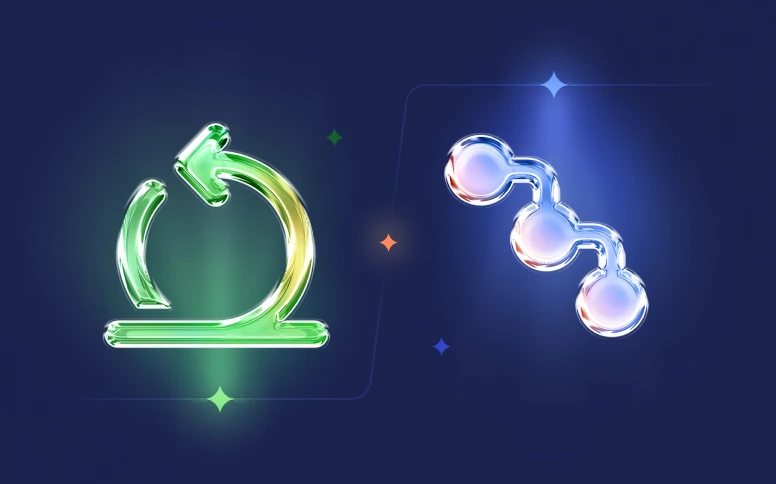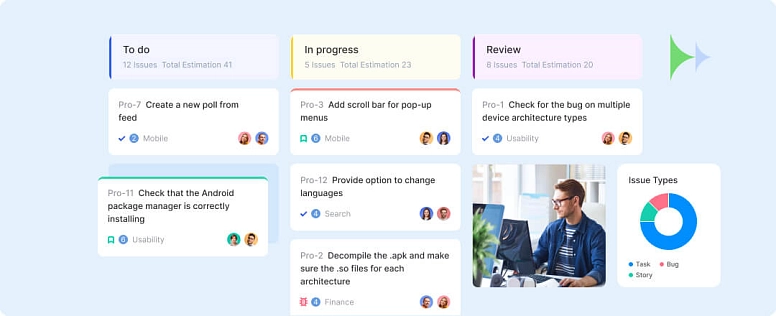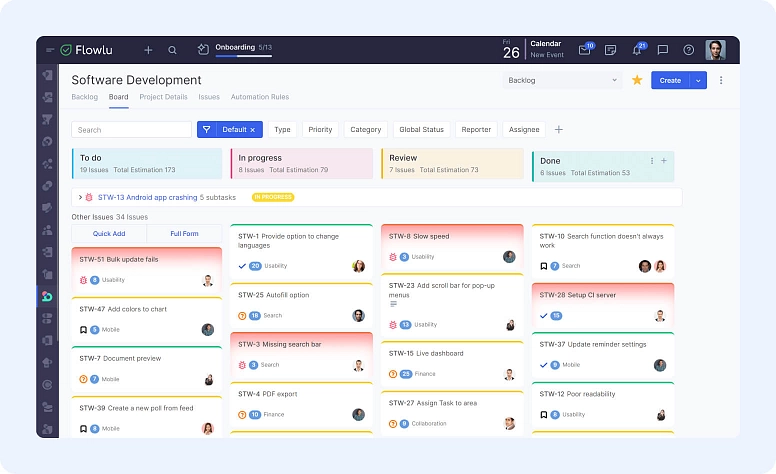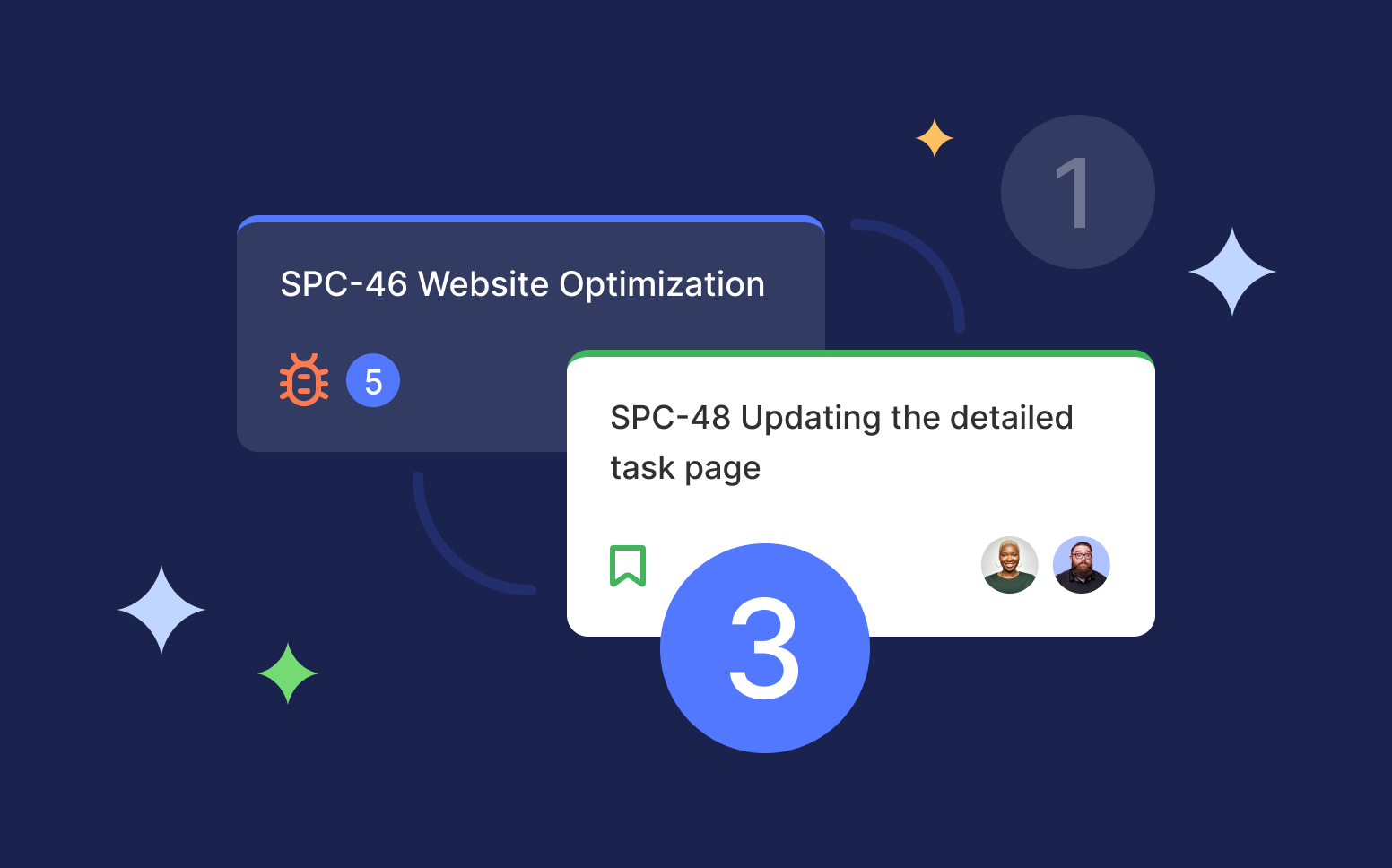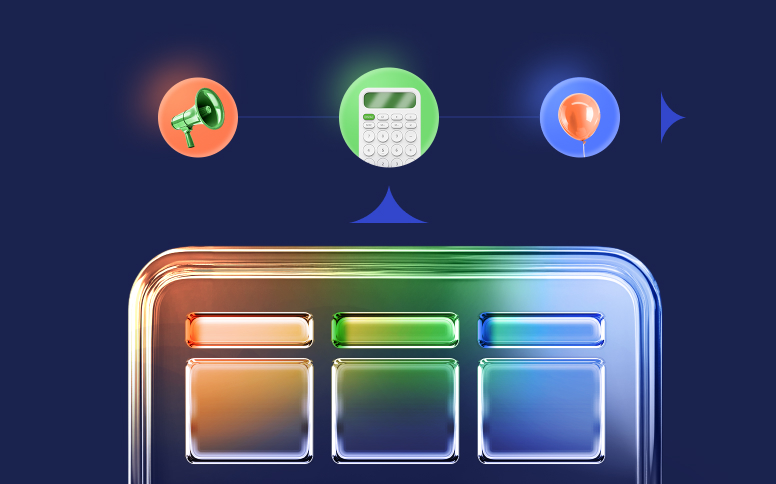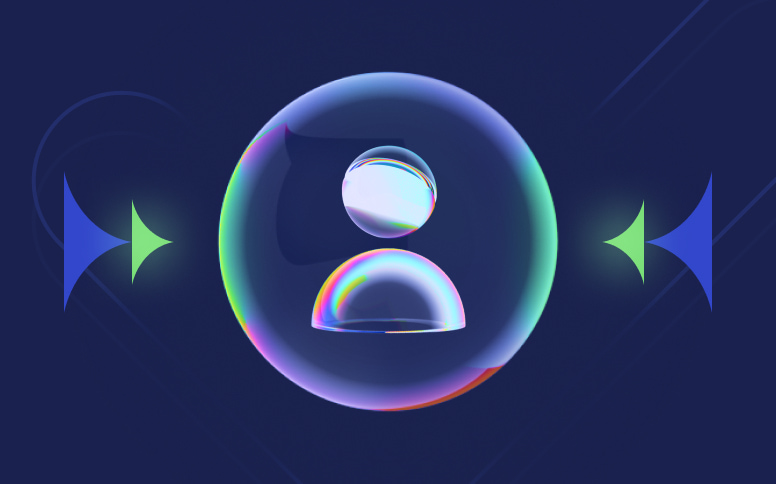Agile vs. Waterfall: Which Project Management Style Fits Your Team?
Agile and Waterfall are the two main styles or methodologies of project management.
Waterfall is the traditional style and involves strict adherence to plans, while the more flexible Agile was developed in response to Waterfall and its perceived over-rigidity.
Both styles have their own fair share of strengths, weaknesses, and risks. Many factors should be considered when choosing which approach to use for any given project.
Below, we’ll give you a detailed explanation of each style and help you decide which of them may suit your project the best.
Waterfall Methodology
The Waterfall model, named after a waterfall that falls straight down into a body of water, is a linear, sequential, and some would say strict approach to project management.
Historically, the term and methodology came from manufacturing and construction industries, where changes and adjustments to initial plans were often too costly or downright impossible.
Other industries with legal regulations and thus requiring strict documentation, also tend to follow Waterfall.
Waterfall is all about the rigid, stage-by-stage execution of pre-planned steps called phases. Typically, each phase must be completed before moving on to the next one.
Phases of Waterfall
1. Objective specification and requirement gathering
First and foremost, the goals of the project are defined in detail. Clients and stakeholders will explain exactly what they want from the project. Then, all requirements for the project, such as the budget or other resources, are gathered.
2. Planning and design
Once the objectives are defined and the requirements are obtained, the team can now plan how to execute the project. Each phase of the plan must be explicitly detailed.
3. Implementation/Development
The plan is now executed and the actual development of the product or program occurs, ideally following initial plans to a tee.
4. Testing
Once development is complete, the product undergoes rigorous testing to ensure it meets the standards outlined in the planning phases. Many teams now incorporate automated testing with AI to accelerate defect detection and improve test case generation.
5. Deployment/Releasing
The final product is then delivered to the client or released into the market.
6. Maintenance
Post-launch, maintenance steps or updates may be implemented. However, these tend to be relatively minor, as the core product is usually considered final (if things go according to plan, at least).
Waterfall Pros
1. Clear and predictable structure
With explicitly structured, step-by-step plans, there is little to no room for confusion or unpredicted variables. Each phase has clear goals and deliverables.
Because everything is meticulously defined upfront, scheduling and resource allocation is easier. Everyone on the team knows what to do next.
2. Comprehensive documentation
Each phase is thoroughly documented. This makes it easier to track the project’s progress. It also makes it easier for new team members to follow and contribute to the project.
3. Easier for managers
At least for project leads, Waterfall may be easier to manage. After all, your team members should all be following detailed instructions for each phase, reducing the need for micromanagement.
4. (Typically) better for smaller projects
Smaller projects have fewer moving parts and therefore have fewer chances of encountering unexpected hiccups. They will also have fewer requirements or less ambitious goals that are likely won’t change.
This is why Waterfall may be chosen by groups with smaller budgets or less lofty goals, like:
-
Non-profit organizations
-
Individual projects
Waterfall Cons
1. Inflexibility
Because changes are difficult to incorporate once the project is executed, Waterfall is at risk of being derailed by unexpected variables. This makes it unsuitable for projects where requirements may evolve or are dealing with unpredictable factors.
There is the inherent risk of discovering issues or incorrect assumptions late in the process—that is to say after the planning phase. These are difficult or costly to correct. These issues are typically discovered during the testing phase, when development is already done.
2. Less client involvement
Clients are typically no longer involved after the planning and requirements phase. If client preferences or needs change, the original plan may no longer result in a satisfactory product.
3. Longer delivery times
Because clients are not involved during the intermediate phases, they’ll have to wait until the end of the project to examine the final product—which, again, can expose previously undiscovered issues or fail to account for their evolving needs.
Agile Methodology
Agile, on the other hand, is a flexible, iterative approach to project management. It is the newer of the two and was actually developed as a response to Waterfall and its perceived over-rigidity.
Rather than strictly adhering to a pre-drafted step-by-step process, Agile embraces adjustments and changes in the project’s process. It emphasizes adaptability, client collaboration, and rapidly delivering product increments.
Some studies even show that Agile companies have higher project success rates!
Processes where requirements evolve or where client feedback is essential—such as more creative projects where a client’s vision may not exactly be captured by initial ideas or worded documents—may favor an Agile style.
Key Features of Agile
1. Sprints
Whereas Waterfall is broken down into phases, Agile methodologies are usually comprised of sprints. Sprints are small bursts of work, hence the name.
They typically last 1-4 weeks and are intended to result in product increments that are usable or presentable to clients for feedback.
In some Agile setups, different team members are working on different sprints, developing different parts of the project.
2. Collaboration
Agile encourages continuous communication between team members and stakeholders. Clients are actively involved throughout the project, giving feedback and making adjustments as needed.
3. Adaptability
An Agile approach values flexibility, expecting unforeseen variables to disrupt the expected workflow.
4. Continuous Testing
The product is tested in every sprint, ensuring that any lingering issues are identified and resolved as soon as possible.
Agile Pros
1. Flexibility
Agile projects value adaptability and flexibility. They are set up to remain resilient and undisrupted in the face of changing requirements or feedback from stakeholders and clients.
2. Faster incremental delivery
Unlike Waterfall approaches where the product is only unveiled after it is completed, Agile’s sprints allow clients to examine the product’s development more closely.
Teams can also deliver functional increments of the final product for the clients to use or test out themselves.
3. Continuous testing and feedback
Because clients are engaged in the development process, Agile gives the team opportunities to receive continuous feedback. Through this, they can finetune the product as they go.
Products are also tested throughout, allowing teams to identify problems early. These things reduce the probability of clients not being satisfied with the final product.
4. Team empowerment
Agile affords teams the freedom to make their own decisions, manage their workflow, and come up with innovative ways to complete the project. This can result in higher worker morale, increased productivity, and faster skill improvements among the team members.
Want to experience the benefits of Agile for your own projects? Flowlu offers powerful Agile project management features to streamline your workflow and adapt to changing project needs.
Agile Cons
1. Less Predictability
An Agile approach looks to keep its options open, typically resulting in looser plans. However, this makes it more difficult to schedule operations, estimate costs, and give clients a more solid idea of what to expect.
If different sprints are also being worked on at the same time, the different aspects of the product may also end up having incompatibilities with each other.
2. Scope and budget creep
Agile’s looser structure can result in uncontrolled changes. This can sometimes result in bloat being added to the project’s scope—and thus budget overruns. And, of course, clients won’t be happy if you keep asking them for extra budget!
3. Less documentation
Due to the rapid changes in an Agile approach, many of them are often left undocumented. This may make it harder to track progress.
Additionally, because members are focusing less on documentation, data security protocols may not be followed at all times. This makes data security a higher priority.
After all, both your company's and your client’s data are at risk of data breaches. Ensure that you’re employing data security protocols, like choosing the best VPN for multiple devices for your team’s use case, using secure data storage apps, and using encrypted communication platforms.
4. Requires experienced team members
Due to its looser planning, team members are generally given less specific instructions. Thus, Agile works best with experienced team members who are self-organized, familiar with the task at hand, and can troubleshoot unforeseen problems.
Factors to consider: When should I choose which style?
1. Project scope and complexity
- Waterfall
Smaller companies with smaller, less complex projects may prefer Waterfall. These projects have clearer requirements and fewer moving parts and therefore will be less likely to encounter unexpected problems.
- Agile
Larger, more complex projects may be better suited for an Agile approach. These will be more likely to run into unexpected issues which may require client feedback.
2. Clarity of client expectations and requirements
- Waterfall
If your client has clear, well-defined requirements and expectations that likely won’t change, Waterfall’s stricter planning may be better equipped to fulfill them
- Agile
If your client isn’t exactly sure about their needs or preferences, such as in the case of creative projects, an Agile approach will be better.
3. Schedule
-
Waterfall
Projects with a strict deadline will be better off with a Waterfall approach, as everything is planned and scheduled.
-
Agile
If a client gives you a wider timeframe in which to accomplish the task, an Agile approach might be better to afford you flexibility.
4. Client Involvement
-
Waterfall
If your client wants to “set it and forget it” by simply explaining what they want and just waiting for the final product, a Waterfall approach can be employed.
-
Agile
However, if your client wants to be involved, examining the product as it gets developed, and wants to offer continuous feedback, you’ll have to go with an Agile style.
5. Budget
-
Waterfall
If you have a fixed and final budget, you must employ a Waterfall approach to avoid extra costs.
-
Agile
On the other hand, a more flexible budget affords the potential scope and cost bloat of an Agile approach.
6. Legal compliance
-
Waterfall
If you’re working in an industry with strict legal regulations like…
-
Healthcare
-
Finance
-
Construction
-
Manufacturing
-
Government
… then you’ll likely need Waterfall’s strict documentation to comply with these regulations.
-
Agile
Industries with fewer regulations and more flexibility, such as creative industries or software development, will also typically use an Agile approach.
Additionally, these industries also tend to have rapid iteration processes and require continuous feedback when developing products.
7. Risk Tolerance
-
Waterfall
If your client is risk-averse, then a Waterfall approach is better to stick with Waterfall’s stability and predictability.
-
Agile
If your client can tolerate some uncertainty, is willing to adjust, or is even willing to experiment, then an Agile approach may be better.
It is better suited for teams and clients that can tolerate higher levels of uncertainty and are open to learning and adjusting as they go.
8. Team structure and experience
-
Waterfall
Teams with clear hierarchies and centralized decision-making will likely fare better following a stricter plan.
-
Agile
However, groups composed of cross-functional, self-organizing, and comfortable with adjusting on the fly according to other teams’ actions may be better with an Agile approach.
8. Personal preference and workstyles
However, even if some signs point you towards one style, ask yourself:
In what style do I feel the most confident and comfortable?
In what style does my team work the best?
Because if you force yourself to employ a style that you know simply doesn’t work for you, then you likely won’t succeed either way. Choose a project management style that you feel the best about.
You don’t have to stick to one: Combining Agile and Waterfall (Hybrid Approach)
But you know what? There’s no law prohibiting anyone from employing a hybrid approach.
Agile and Waterfall are simple theoretical frameworks of project management and exist on opposite sides of one spectrum. Real-life applications of these tend to be more complicated and are usually in the middle.
Depending on the more specific nuances of your project, you may use some parts of a Waterfall approach and some parts of an Agile style.
You may, for example, employ a Waterfall approach while still continuously receiving and acting on client feedback. Or you can plan strictly with a Waterfall approach but be Agile once product development actually starts.
You can also switch things up mid-development if needed. Your Agile project is getting too bloated? You make things more Waterfall. Your Waterfall project is suddenly receiving requests from your client to change things up? Adjust and use an Agile style instead.
Conclusion: Choose carefully!
Despite their differences, studies show that both Agile and Waterfall can be effective—even if the former is the newer and somewhat more popular one in recent years.
There really is no one-size-fits-all approach to things that are so complex!
Do you need Waterfall’s predictable, structured approach? Or do you need an Agile approach for its flexibility? Or do you need something in the middle?
Carefully evaluate the context of your project and understand the strengths and weaknesses of each approach. In doing so, you can choose which style suits your team and the project the best.
If Agile is the right fit for your team, Flowlu offers comprehensive Agile project management tools to help you stay organized and adaptable. Try Flowlu today and see how Agile can speed up your projects!
Agile focuses on flexibility and iterative progress with client collaboration, while Waterfall follows a strict, linear process with detailed upfront planning and less flexibility.
Agile is ideal for teams that need adaptability and frequent client feedback, while Waterfall suits teams with clear, fixed requirements and a need for strict timelines and documentation.
Yes, many teams use a hybrid approach, blending Agile's flexibility with Waterfall's structured planning to meet the specific needs of their projects.





